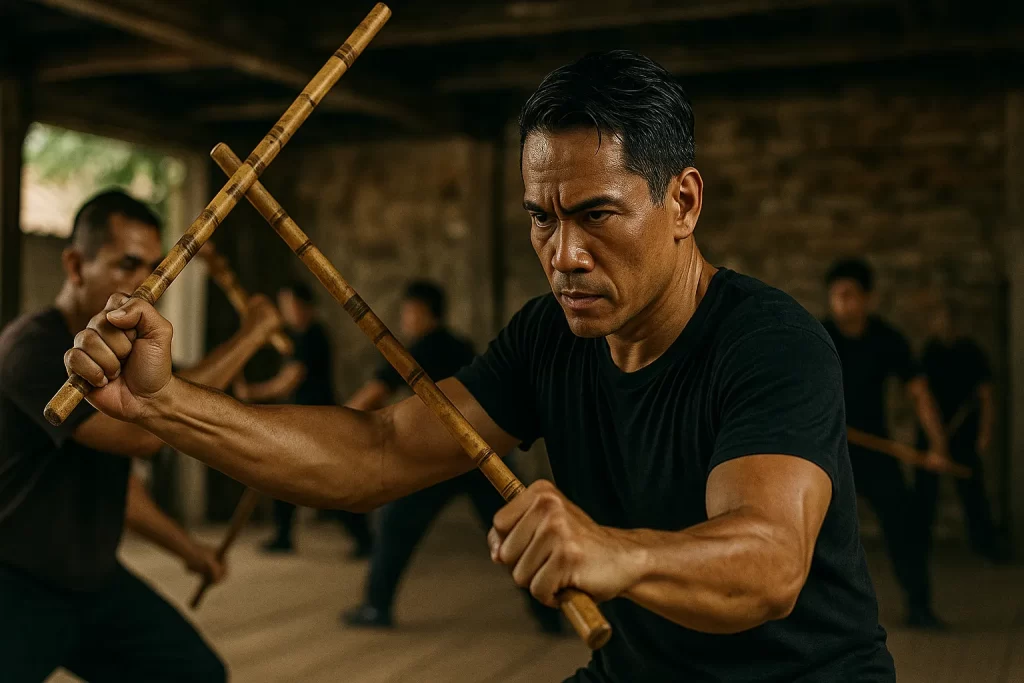Balintawak

Balintawak is a Filipino martial art developed for close-quarters combat using a single stick and open-hand tactics. Originating in Cebu City, it was created as a practical, street-oriented system for self-defense and real-world application. The art is known for its one-on-one instruction, quick reflex development, and emphasis on economy of motion. Balintawak teaches not only how to fight but how to read and control the rhythm of an encounter.
Balintawak Essentials
About Balintawak
Balintawak is a close-range Filipino stick-fighting system known for its speed, deception, and explosive counter-attacks. This section introduces the school’s compact structure, urban origins, and its unique emphasis on reflex-based combat.
Balintawak History
Discover how Balintawak was born in the streets of Cebu in the 1950s as a streamlined response to real-world threats. Learn about its development under Venancio “Anciong” Bacon and its break from classical styles in favor of direct, efficient combat.
Philosophy & Approach
Balintawak emphasizes reaction over premeditation, with a philosophy grounded in fluidity, adaptability, and real-time response. The system teaches students to read opponents intuitively and respond with controlled but decisive force.
Techniques & Style
Explore the signature one-on-one training method using a single stick and open hand, built around close-quarters defense, traps, disarms, and explosive counters. Balintawak’s technique is refined through repetition, timing drills, and pressure training.
Traditions & Etiquette
Respect for the instructor (the “Guide”), patience in the learning progression, and humility in skill development are core to Balintawak culture. Etiquette is maintained through structured progression and personal mentorship.
Uniform & Symbols
Unlike many martial arts, Balintawak requires no traditional uniform. Practitioners typically train in casual attire, focusing on functionality, though some schools adopt shirts or patches denoting lineage and rank.
Weapons
Balintawak centers on the rattan stick, often paired with empty-hand applications and improvised weapon use. This section explores the weapon’s role as both a training tool and a representation of real-life defense.
Ranking System
Balintawak uses a structured but personal ranking system, typically broken into levels of “Basic,” “Intermediate,” “Advanced,” and “Mastery.” Progression is based on proficiency, teaching ability, and lineage acknowledgment.
Balintawak Glossary
Familiarize yourself with key terms such as “tapi-tapi,” “counters,” and “grouping,” as well as cultural expressions and concepts that define Balintawak’s training structure and tactical mindset.
Notable Figures
Meet the key figures in Balintawak history and modern development—from Anciong Bacon to Bobby Taboada and other global ambassadors—whose teaching and innovation have shaped the art’s identity.
Branches & Organizations
Explore the major branches of Balintawak such as Balintawak Cuentada, Taboada System, and Original Balintawak Self-Defense Club. Learn how each preserves core principles while offering unique interpretations.
Competitive Format
While traditionally non-competitive, some Balintawak schools now engage in controlled sparring and demonstrations. This section covers how these practices are framed for education, public showcases, and practical testing.

